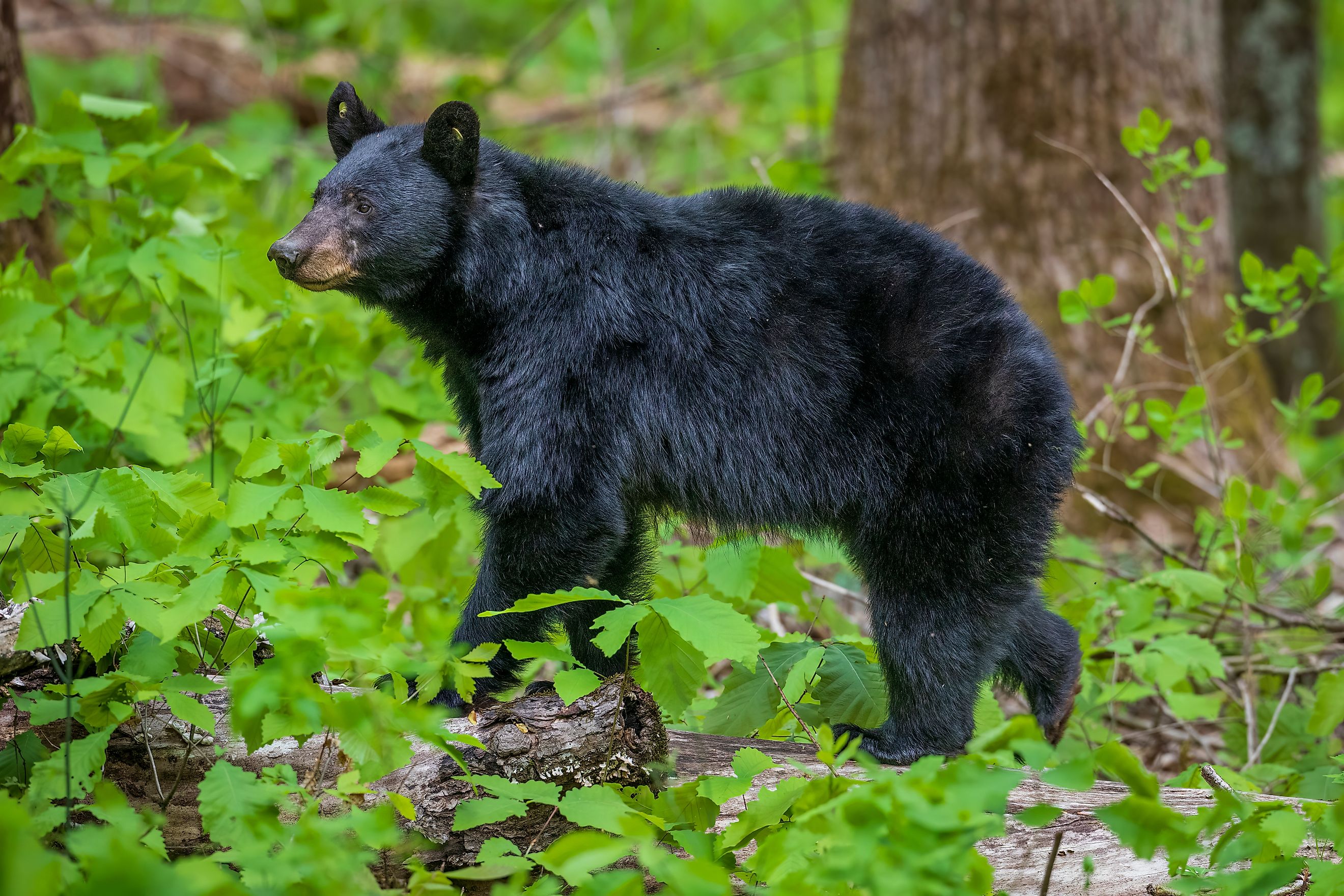
The 11 Deadliest Animals in Tennessee
Tennessee, a state known for the natural beauty of the Great Smoky Mountain range and the grand Mississippi River, is an outdoor lover’s dream. That said, hand in hand with the wilderness comes plenty of wildlife, and there is no shortage of deadly animals in Tennessee. Thus, visitors to Tennessee will need to take precautions when exploring these natural landmarks. Whether this involves carrying a pack of antivenom or knowing which kind of bug spray to carry when hiking, there are plenty of ways to stay safe. For those looking to stray from the big cities and see Tennessee’s vast wilderness for themselves, these are some of the deadliest animals in the state.
Timber Rattlesnake
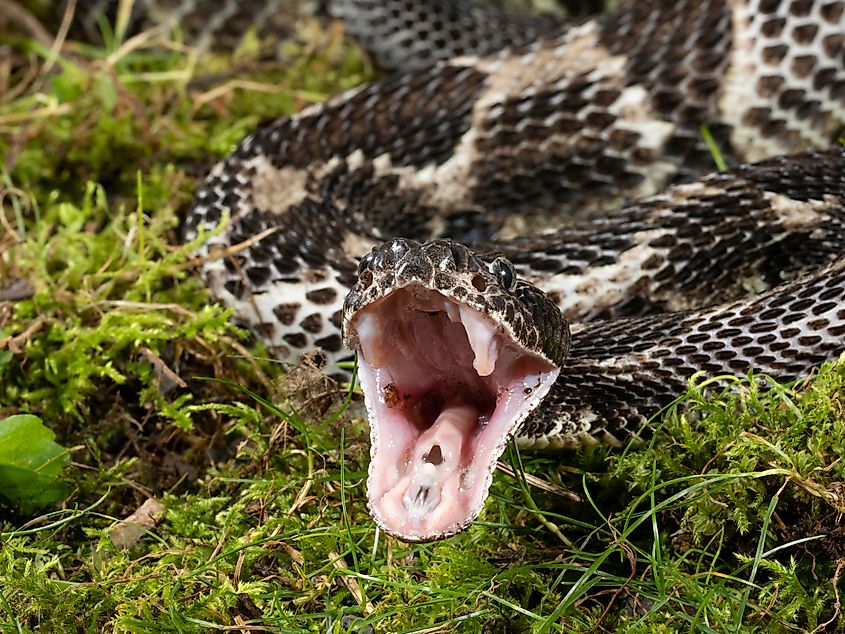
If you have not heard of the Timber rattlesnake before, you have likely seen it somewhere or another. This serpentine superstar was immortalized in 1775 on the Gadsden Flag. The animal was a symbol of American resistance to the British during the Revolutionary War due to its lethality. Their venom is quite potent, making them one of the deadliest animals in the state. Thankfully, these snakes are not particularly aggressive and will only strike if disturbed. These snakes average 36 to 60 inches (91 to 152 cm) in length and are known for their distinctive rattling tails. They typically live in the forests and hillsides, though they can be found nearly anywhere in Tennessee.
Though data is hard to come by, the CDC in 2016 estimated that roughly 6,000-8,000 people are bitten by a venomous snake each year. One study by Henry Ford Health on 101 fatal bites from native snakes found that 74 (90.2%) of the 82 fatalities occurred by a confirmed rattlesnake bite or in a region where rattlesnakes were the only native venomous snake. This goes to show how dangerous these beautiful snakes are.
Deer
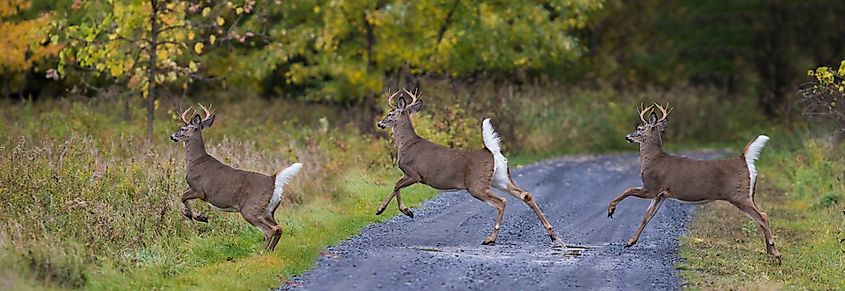
Thanks to Disney movies, most people would not think deer are a particularly dangerous animal. Unfortunately, the dangers posed by deer are significantly higher than you might think. Deers are responsible for roughly 440 human fatalities and over 50,000 human injuries per year. While this is mostly caused by head-on vehicle collisions and not due to the animals’ aggression, they pose a significant risk nonetheless. In Tennessee, White-tailed deer can be found throughout the state, especially near forested roads and highways. Thus, it is essential to look out for signage warnings of common deer crossings while driving and keep your eyes on the road, especially at night.
Cottonmouth
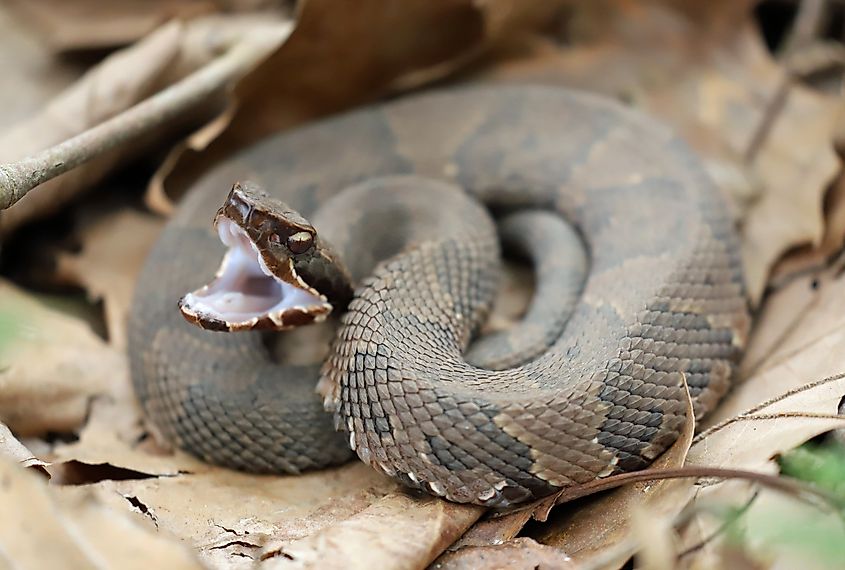
Though not a rattlesnake, the Cottonmouth snake is no less deadly and should be treated with the utmost caution. These snakes usually grow between 30 to 48 inches (76-122 cm) in length and sport dark olive-brown coloring. They are most often encountered in the western part of the state, including counties of the northern Highland Rim. However, the Cottonmouth is the only aquatic venomous snake in Tennessee, so it is imperative to watch for these snakes when in or around a body of water.
For those unfortunate enough to be bitten, Cottonmouth venom contains a powerful neurotoxin that causes massive inflammation due to the destruction of tissue it causes. Thankfully, these snakes are less aggressive than their reputations might suggest, and they prefer to go on the defensive while displaying their white (cotton-like) mouths.
Alligators
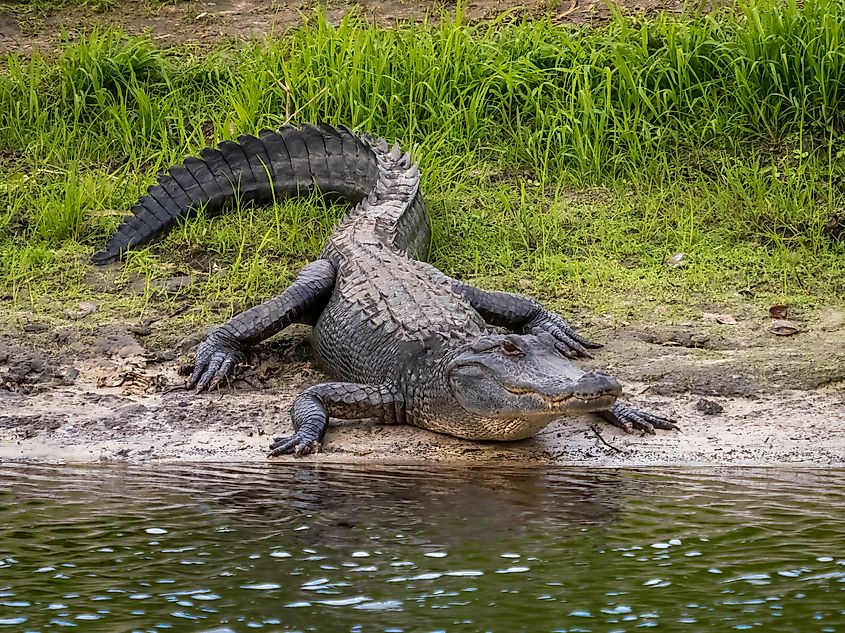
Unlike deer, alligators are a name most people would expect to be on a list of deadly animals. This animal is known for its blunted snout and dark olive and black hides. The average alligator weighs around 360 kg (790 lb) and will reach a length of 4 m (13 ft) by adulthood. Typically found in southern states, these animals are changing their migratory patterns due to environmental shifts. Consequently, they are becoming commonplace in parts of Tennessee, and the dangers follow. Though alligator attacks are rare, as humans tend to avoid these reptiles, the sheer size of these animals makes them incredibly dangerous. Just remember to keep an eye out for their telltale round noses if you’re near water.
Black Widow Spiders
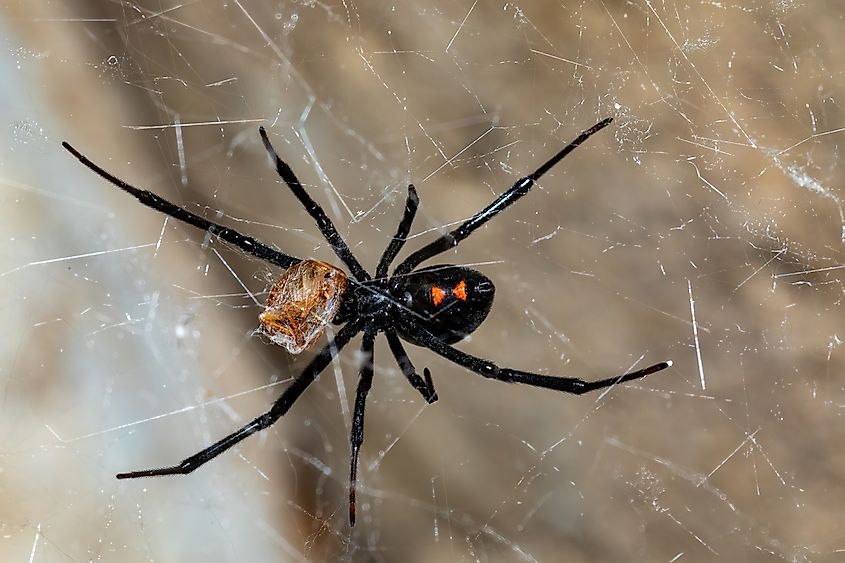
The infamous Black Widow spider is proof that big things often come in small packages. This insect is the most venomous spider in Tennessee and one of the most easily recognizable thanks to its jet-black body and the distinctive red hourglass shape along its abdomen. Female spiders possess a dangerous bite, which, by some accounts, is 15 times stronger than a rattlesnake, and anyone bitten by this spider should seek immediate medical attention. The Black Widow’s venom attacks the victim’s nervous system, and it can be fatal to children. These spiders typically make their webs near animal burrows, near woodpiles, and away from high-traffic, dry areas. Thankfully, this spider rarely bites humans and only becomes aggressive if disturbed.
Brown Recluse Spiders
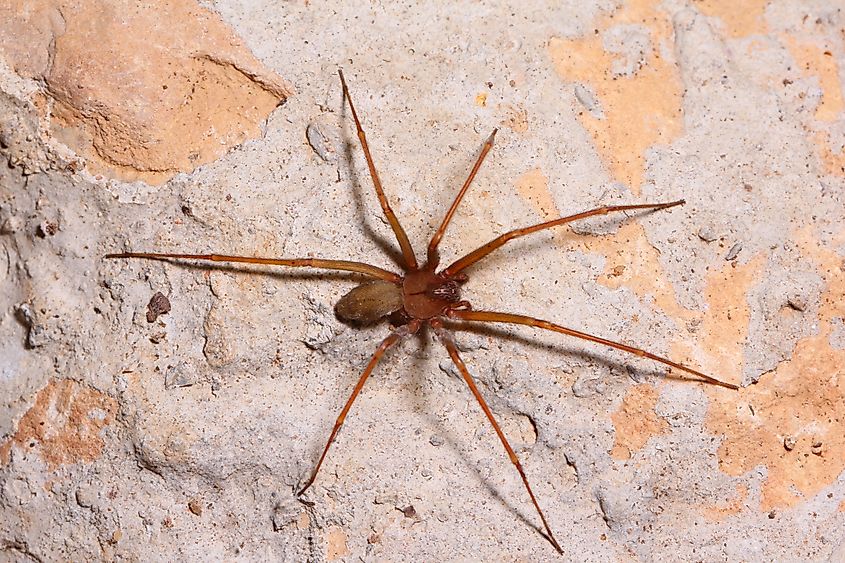
Like the Black Widow, the Brown Recluse is another spider that is one of Tennessee’s deadliest animals. Typically yellowish-brown, these spiders are known for their violin-shaped markings on their bodies and vicious venom. They can be found both indoors and outside, making avoiding them difficult. Bites from a Brown Recluse are rare, but the effects are horrifying. The bite may be painless at first, but what follows can include lesions, nausea, and necrotic wounds in which parts of the body begin to rot and fall away. Due to its dangerous toxins, the Brown Recluse spider should not be taken lightly. Thankfully, they are less active in winter and tend to hibernate until February/March.
Mosquitos
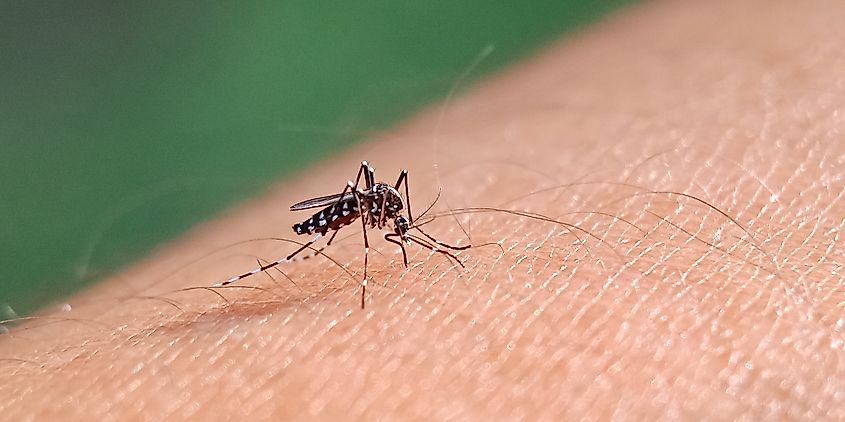
At face value, the common mosquito may not be as fearsome as an alligator or a black bear, but make no mistake: mosquitoes are the most deadly animal in the world. This tiny insect punches well above its weight class thanks to its ability for viral transmission. West Nile, Zika, and Malaria are only a few types of diseases that can be spread by these little bloodsuckers. With some diseases being fatal, the CDC estimates that mosquitos are responsible for over 700,000 deaths worldwide each year. This massive number is also thanks to their impressive reproduction rate, as a female can lay up to 500 eggs at a time. Found anywhere there is water, mosquitos are a common occurrence in Tennessee, so be sure to bring bug spray.
Ticks
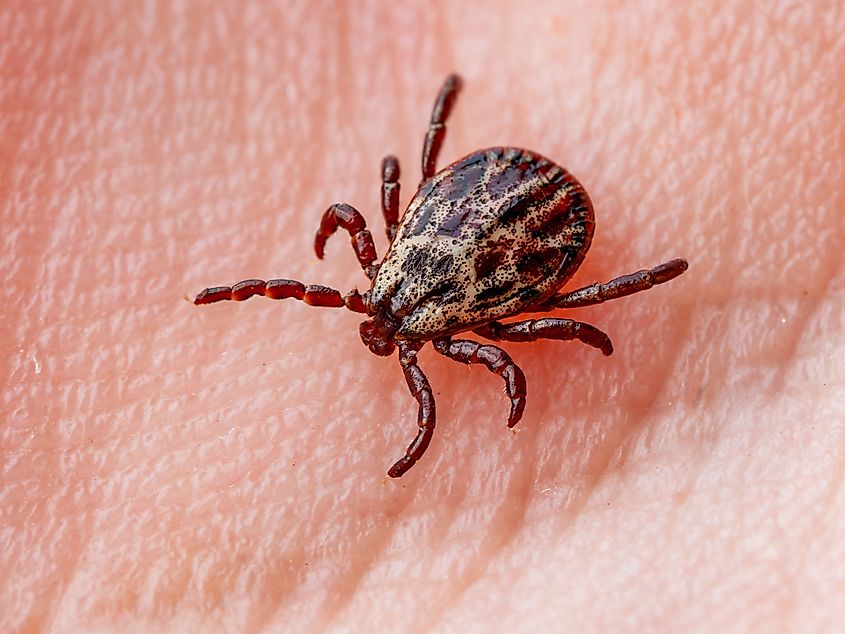
Similar to mosquitos, ticks are more dangerous thanks to what they carry rather than due to their bite strength or toxic venom. These little insects are often found in Tennessee’s wooded areas in tall grasses, waiting for passersby to clamp onto an arm or leg and begin feeding. When ticks draw blood, they pass along whatever diseases they may be carrying. Lime Disease, Rocky Mountain Spotted Fever, and Babesiosis are only a few of the many harmful diseases that can be contracted if a tick bite is not found and treated in time. Complications from tick bites depend on the pathogens, but they can include allergic reactions to beef, nerve issues, and more.
Kissing Bugs
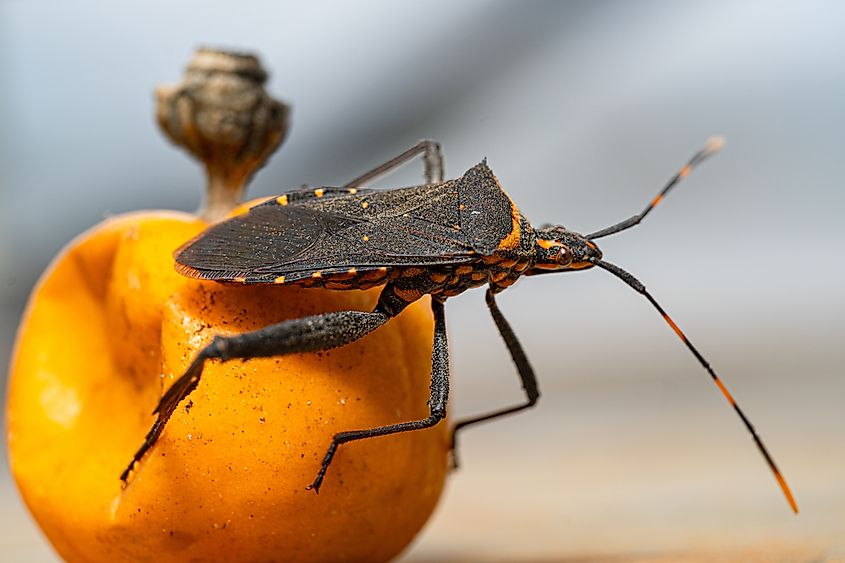
The Kissing Bug gets its name from the (very creepy) habit of biting near their victims’ mouths. These insects carry the parasite Trypanosoma cruzi, which causes Chagas disease. Although it’s treatable in its early stages, if an infection is left untreated, it can cause a chronic, lifelong illness. Initial symptoms of this disease include fever, fatigue, body aches, headache, rash, loss of appetite, diarrhea, and vomiting. In its long-term phase, reported symptoms are cardiac complications such as enlarged heart and heart failure and gastrointestinal symptoms like difficulty swallowing, digestive issues, and the inability to eat solid food. With symptoms like these, it’s easy to see why Kissing Bugs are considered dangerous. One of the easiest ways to prevent Kissing Bug bites is to use mosquito netting and insect repellent in areas where these insects live, like thick forests. Additionally, follow up with a doctor if you notice bites or sores around your mouth and nose.
American Black Bear
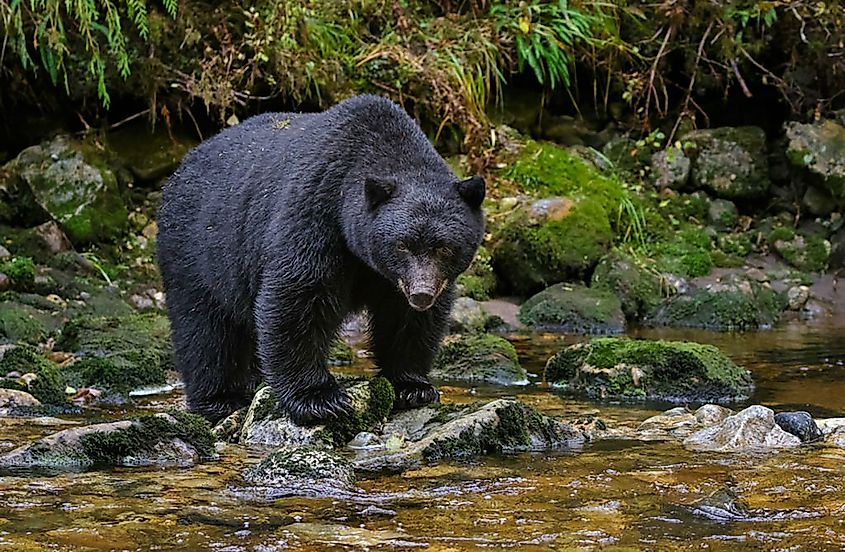
Similar to the alligator, the bear is another animal commonplace on lists of dangerous animals. The American black bear stands between 5 to 6 feet (152 to 182 cm) tall at full height and can weigh between 200 to 600 pounds (90 to 272 kg). These animals are considerably smaller than their Grizzly bear cousins, but they pose a real danger to humans based on size alone. Thankfully, these bears are typically cautious of humans, and there have only been 82 fatal bear conflicts since 1784. If you encounter a black bear, make yourself as big as possible and shout to warn the bear off. In Tennessee, American black bears are found in two main groups: the Appalachian Population along the North Carolina border and the Cumberland Population in the northern Cumberland Plateau.
Wild Boar
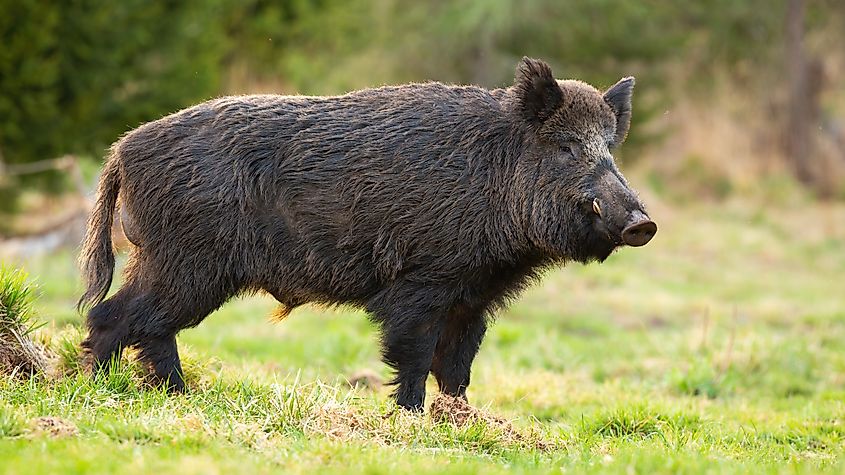
Wild boars can grow as large as black bears, with some specimens recorded as five feet long and weighing as much as 660 pounds (300 kg). These animals have thick, rough hair, which usually has a black or muddy red coloration. The males of this invasive species have large canines extending from the sides of their mouths and are extremely aggressive. Due to their aggressive nature, they are often considered more dangerous than many other animals on this list. A study of feral hog attacks by John J. Mayer in 2013 found that the highest number of wild boar attacks worldwide took place in the US. These animals can be encountered in many parts of the state, and if you encounter one, it is recommended that you avoid them and call the local animal control office.
Wrapping Up
The list of deadliest animals in Tennessee may be surprising to some. From the infamous Black Widow spider to the common deer, there are plenty of risks from the state’s wildlife. Thankfully, the vast majority of these animals are not aggressive and will only attack if disturbed. There is so much to see, from the mountains to the state’s lakes. So, when visiting Tennessee’s parks and forests, remember to pay attention to your surroundings and avoid contact with its furry residents. Also, don’t forget to put on some bug spray to steer clear of those pesky Kissing Bugs.











